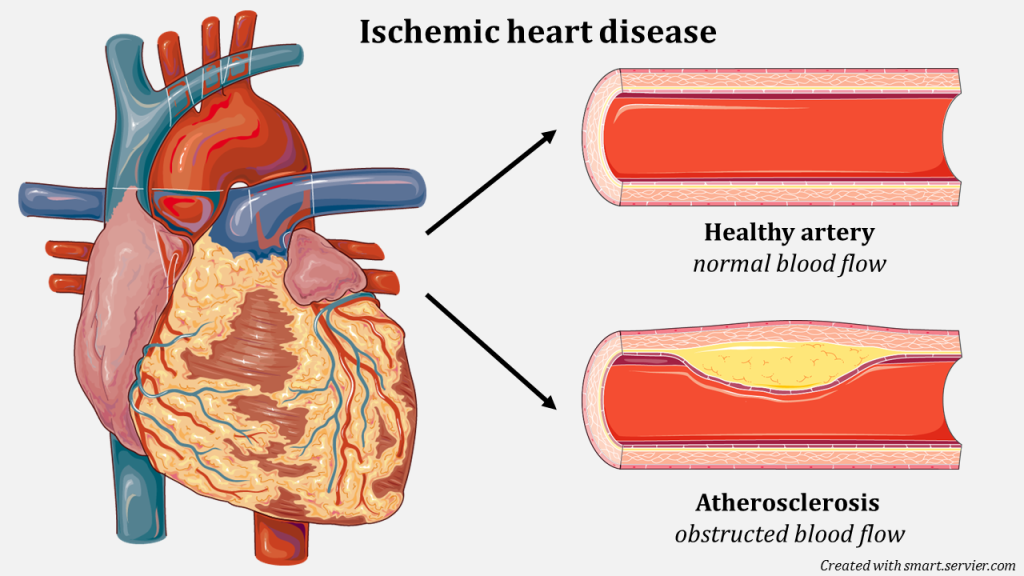Atherosclerosis and Angina
Atherosclerosis Chapter Overview
Jennifer Kong and Tetiana Povshedna
Chapter Learning Objectives
By the end of this chapter, you will be able to:
-
Describe the gross development of atherosclerotic plaques as an inflammatory event
- Describe the epidemiology, risk factors, and prevention strategies for atherosclerosis
-
Histologically, identify the presence of atherosclerotic plaques on vascular tissue
-
Correlate clinical findings and history with the pathology observed using atherosclerosis as an example.
- List possible consequences of atherosclerotic plaque development and rupture in the vessels of the heart and beyond
- Briefly describe how interprofessional collaboration of health care professions works towards diagnosis of atherosclerosis and angina
In 2020, the World Health Organization reported that ischemic heart disease was the leading cause of death in the world WHO top 10 causes of death. However, what exactly is ischemic heart disease?
Ischemic heart disease means that the heart is not getting enough oxygen – most likely because there is a restriction of flow of oxygenated blood to the heart tissues. One of the most common causes of this restricted blood flow is atherosclerosis, which involves fatty plaques formation and hardening of blood vessels (Figure 8.1). That impaired blood flow causes insufficient delivery of oxygen to the heart tissues – causing pain (known as angina) and loss of heart function.
Atherosclerosis is a chronic inflammatory process that involves accumulation of lipid particles (fatty streaks and plaques) on the vessel walls across the vascular tree (primarily vessels serving the heart, brain, lower limbs). Blood flow impairment caused by atherosclerosis can lead to acute atherosclerotic cardiovascular events, such as heart attack and stroke.
Keep in mind that atherosclerotic disease isn’t limited to just the coronary vessels and is a systemic condition. Often, this disease process is evident in other parts of the vascular tree, which will similarly cause impaired blood flow and damage to blood vessels.

The following abbreviations are used throughout the chapter.
| CVD | Cardiovascular Disease |
| EKG | Electrocardiogram |
| HDL | High-Density Lipoprotein |
| IDL | Intermediate-Density Lipoproteins |
| LDL | Low-Density Lipoprotein |
| MAP | Mean Arterial Pressure |
| oxLDL | Oxidized LDL |
| TMAO | Trimethylamine N-Oxide |
| VLDL | Very Low-Density Lipoproteins |
| VSMCs | Vascular Smooth Muscle Cells |
| WSS | Wall Shear Stress |

